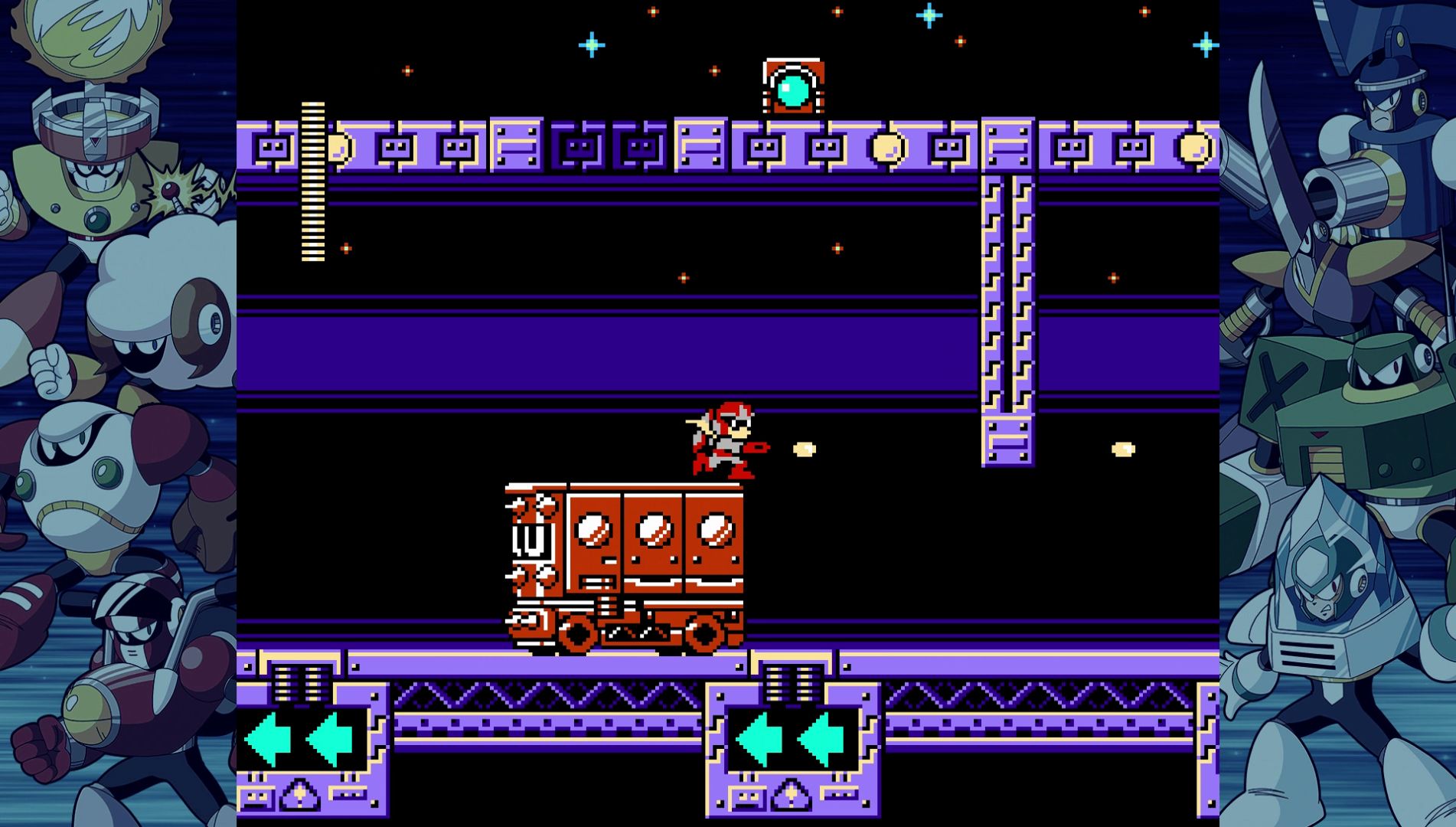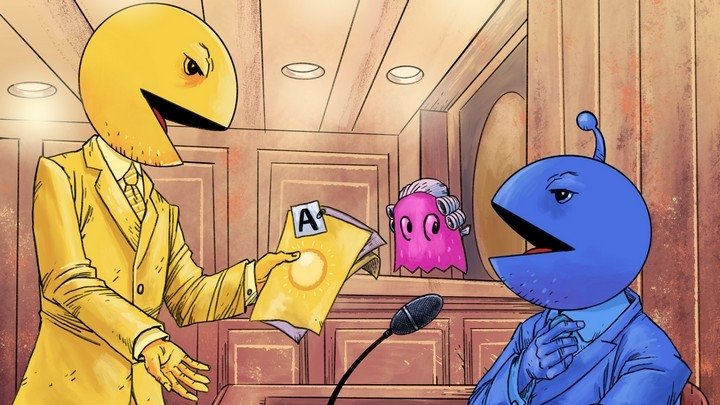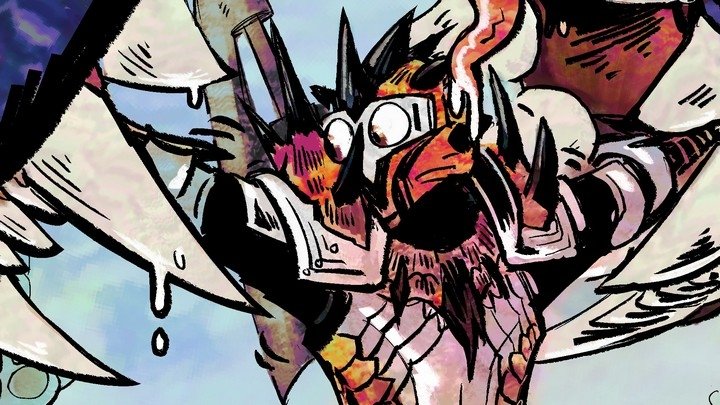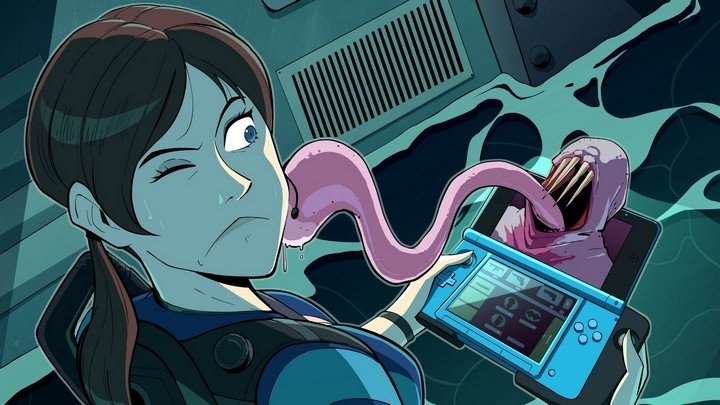With Mega Man Legacy Collection 2, Capcom has some oversize robot boots to fill
This morning, Capcom announced Mega Man Legacy Collection 2 after a listing by South Korea's Game Rating and Administration Committee leaked its existence back in April. Following 2015's Mega Man Legacy Collection, which comprised the first six Mega Man games, Legacy Collection 2 will make up the remainder of the original series' ten core games, from 1995's Mega Man 7 to 2010's Mega Man 10.
These games represent a time when the Mega Man series was at loose ends: After sticking with the NES to the bitter end, with Mega Man 6 releasing extremely late in the system's life (so late that Capcom wouldn't even publish it outside Japan, leaving Nintendo to pick up the slack), it struggled to find a place to call home. Mega Man 7 came to the Super NES, as one would expect, but then Mega Man 8 jumped to the PlayStation and Sega Saturn. Capcom backpedaled a bit with Rockman & Forte, a Super Famicom release as late as Mega Man 6 had been on NES; internally labeled "Rockman 8.5," Capcom intended it as a consolation prize for fans who hadn't yet graduated to 32-bit consoles. Unfortunately, no one would save this one from a Japan-only release (at least not until ), and the main series went quiet for a decade while Capcom focused on spin-offs like Mega Man X, Legends, Zero, and Battle Network. It finally resurfaced to great acclaim with Mega Man 9 and 10, both of which were released for Wii, PlayStation 3, and Xbox 360. All told, the post-NES series produced fewer games in more than twice the time, on six different platforms.
Even limiting Mega Man 8, 9, and 10 to just one platform, Legacy Collection 2 still promises games from three disparate sources. This comes as a surprise considering developer Digital Eclipse intentionally limited the original Legacy Collection to the Blue Bomber's NES outings in order to ensure accurate reproductions of how each game looked, sounded, and behaved on the original hardware. That should be a familiar line if you followed that release at the time, as they had to repeat it constantly as fans decried the exclusion of this or that other Mega Man game. And the final product was indeed the archive-quality production they promised, so their narrow focus evidently paid off. Legacy Collection 2, then, appears to be a case of Capcom giving fans what they've demanded even if it runs counter to Digital Eclipse's philosophy, as evinced by Frank Cifaldi revealing that they're not involved with this one.
The official Digital Eclipse Twitter later stated that Capcom is developing Legacy Collection 2 themselves, raising the question of whether they'll be as painstakingly authentic in their presentation as Digital Eclipse has been. Their announcement promises similar features, including art galleries and music players for each game, as well as a Challenge Mode remixing sections of the original games, but that's just one piece of the picture. One of the brief glimpses at Mega Man 8 shown in the trailer depicts an underwater scene without a wavy filter over the background—one of the tell-tale differences between the PlayStation and Saturn versions. Other differences include include run-ins with Cut Man and Wood Man and a gallery of boss submissions from fans in the Saturn version, as well as FMV scenes with superior compression in the PlayStation version. A true archival release would include both, but that seems sadly unlikely as getting the Saturn version running could require as much effort as adding another game entirely. We can at least hope the Japanese versions of the games will be included, as they were added to the first Legacy Collection in an update and the 3DS release. I just gotta have my Electrical Communication.
Authenticity concerns are less of a factor for Mega Man 9 and 10, which were originally released on post-HD hardware and hardly differed at all from one platform to the next. While the PlayStation 4 and Xbox One lack universal backwards compatibility, many titles from the last generation have made the leap to this one, so it's a relief to see this pair join the crowd—especially Mega Man 9, which is arguably the best game in the whole series. (And those who found it too tough the first time around may appreciate it better thanks to Legacy Collection 2's Extra Armor feature, which reduces damage by half.) Legacy Collection 2 also includes all the DLC for both games, adding up to a thirty-six dollar value; this compilation will sell for twenty, making it a great deal for 9 and 10 alone.
Capcom has Digital Eclipse to thank for laying such solid groundwork for this venture, but at the same time, Legacy Collection 2 will inevitably be judged by the precedent they've set. Cifaldi and company not only brought technical know-how to the table but also a burning passion for game preservation , and I won't be surprised if an absence of the latter is felt one way or another in the final product. Then again, that's not to say Legacy Collection 2 will necessarily disappoint: Digital Eclipse is one part of an ongoing trend toward high fidelity in rereleases of classic games, as opposed to the focus on sheer quantity found in past compilations like Sonic's Ultimate Genesis Collection or 2004's Mega Man Anniversary Collection. As Capcom producer Rey Jimenez admitted in a 2015 interview with USgamer, "While it wasn't just a cash-in . . . the idea was to give more content." As times change, more and more classic games are receiving the individual care they deserve—and while limiting Legacy Collection 2 to just four games may be disappointing to some, it might also be a sign that Capcom have taken Digital Eclipse's standards to heart. If so, we need only hope their internal developers have what it takes to follow the opening act.





